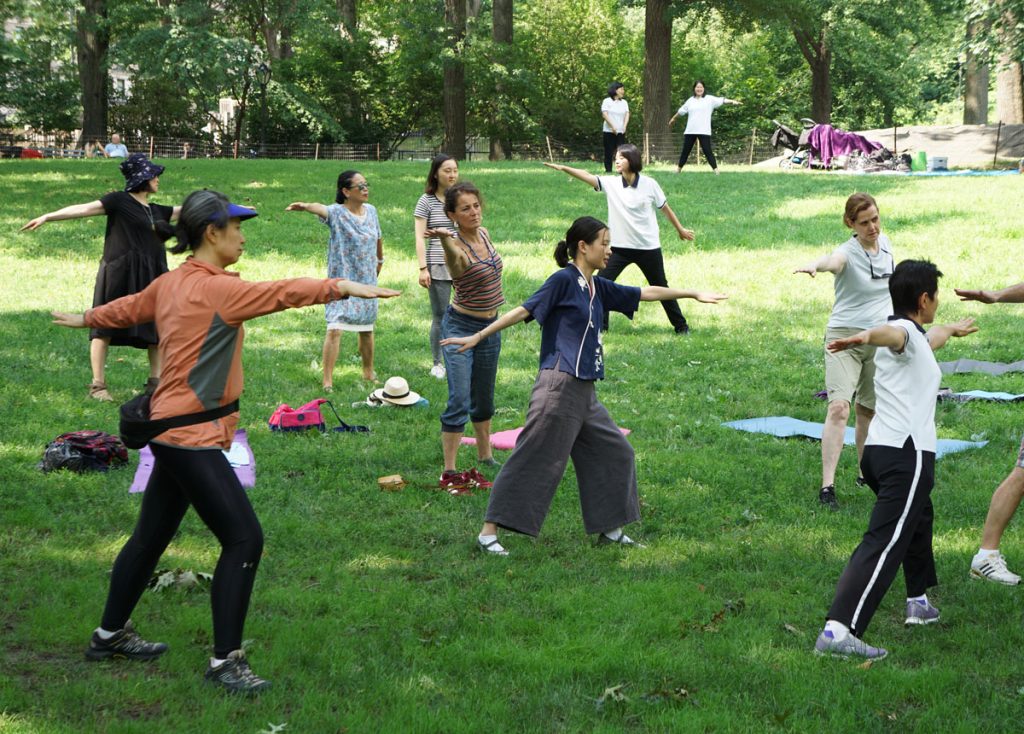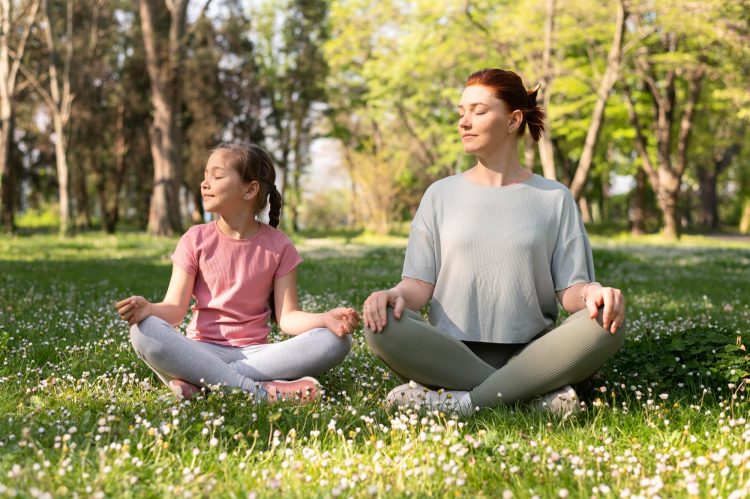In a time of digital distractions, mounting anxiety, and urban overstimulation, finding accessible spaces for mental wellness has become more important than ever. As mental health issues rise across all age groups, communities are turning to an often-overlooked resource for healing: the public park. Parks, traditionally seen as sites for recreation and play, are being reimagined as sanctuaries for mindfulness, meditation, and community mental health. With their natural beauty, open skies, and calming presence, parks provide a restorative environment where individuals can unplug, breathe deeply, and reconnect with themselves and others. This growing movement—bringing mindfulness into public spaces—offers a powerful and inclusive way to improve psychological well-being while nurturing a collective culture of presence and peace.
The Science Behind Nature and Mental Health
The connection between nature and mental wellness is well-established. Research in environmental psychology shows that time spent in green spaces reduces cortisol levels, lowers heart rate, and enhances mood. Nature offers a multi-sensory experience—rustling leaves, birdsong, the smell of grass—that helps ground the mind in the present moment. Studies have also shown that natural settings can enhance attention, increase creativity, and reduce symptoms of anxiety and depression. Even brief interactions with green environments can lead to measurable improvements in emotional health. This makes public parks ideal venues for mindfulness practices, which themselves are rooted in awareness, acceptance, and non-judgmental presence.
Why Public Parks Are Ideal for Mindfulness
Mindfulness, at its core, is the practice of being fully present in the moment. While traditionally practiced indoors in quiet rooms or studios, mindfulness finds a natural partner in outdoor environments. Public parks offer expansive, non-commercialized spaces where individuals can gather freely. Their open nature removes barriers to entry—there are no fees, no memberships, and no uniforms. People of all ages, backgrounds, and fitness levels can participate. Parks are also inherently egalitarian; they belong to everyone. This democratization of wellness is key to creating inclusive mental health strategies. By moving mindfulness into the park, practitioners remove the sense of exclusivity that can sometimes accompany yoga studios or wellness retreats and invite community participation in its most organic form.
Community-Led Mindfulness Sessions
One of the most exciting developments in this space is the rise of community-led mindfulness sessions in parks. Across cities and towns, small groups are forming to host open meditation circles, breathing exercises, walking meditations, and even silent picnics. These sessions are often volunteer-run and donation-based, making them accessible regardless of economic status. Some are led by trained mindfulness coaches, while others follow simple, self-guided formats where participants sit together in silence. What’s remarkable is how these gatherings build community as much as they support individual well-being. Participants often report a sense of connection, shared purpose, and collective calm that’s difficult to find elsewhere in modern life.
Mindfulness for All Ages
Another strength of park-based mindfulness is its adaptability to different age groups. For children, mindfulness in nature can be integrated through playful activities like mindful scavenger hunts, sensory exploration walks, or storytelling under trees. These sessions help kids develop emotional awareness, attention skills, and stress management habits early in life. For adults, especially those juggling work and caregiving responsibilities, parks offer a break from routine and an opportunity for reflection. Seniors, many of whom face social isolation or limited mobility, find in parks both companionship and healing. Mindfulness sessions can be adapted for seated positions or gentle movement, making them inclusive of all physical abilities.
Movement and Stillness: A Holistic Approach
Parks are ideal not just for stillness, but for mindful movement. Practices like tai chi, qigong, yoga, and walking meditation blend physical activity with mental presence. Practicing slow, intentional movement outdoors helps integrate mind and body in a serene environment. The gentle sounds of nature provide a soothing background that encourages deeper focus and relaxation. Group movement sessions held in parks are often less intimidating than gym classes and encourage community bonding. Importantly, they allow for self-paced participation, accommodating both beginners and experienced practitioners. This blending of movement and mindfulness creates a holistic approach to health that addresses both emotional and physical well-being.
Healing After Crisis: Parks as Recovery Spaces
In the aftermath of community-wide trauma—such as natural disasters, pandemics, or acts of violence—parks can serve as gentle reentry points for healing. Open-air mindfulness events provide safe spaces for collective grief, reflection, and resilience-building. Unlike clinical settings, which may feel formal or triggering, parks offer a neutral and comforting backdrop. People can join or leave as they wish, sit at a distance or close by, speak or remain silent. These gatherings often involve rituals such as lighting candles, writing intentions, or guided visualizations aimed at communal recovery. This kind of public mindfulness holds immense therapeutic power: it normalizes emotion, fosters connection, and reminds people that they are not alone.
Accessibility and Equity
Mindfulness in parks also addresses a crucial issue in mental healthcare: accessibility. Traditional mental health services are often expensive, stigmatized, or geographically limited. Public mindfulness sessions eliminate many of these barriers. There are no intake forms or insurance requirements. Sessions can be offered in multiple languages, tailored for neurodiverse individuals, and designed for various cultural contexts. Parks located in underserved neighborhoods can become vibrant mental health hubs where mindfulness is not just a luxury, but a right. Community partnerships with mental health professionals, cultural leaders, and local government can help sustain and expand these offerings.
Digital Detox in Nature
Modern life is dominated by screens. Phones, laptops, and endless notifications fragment our attention and fuel chronic stress. Mindfulness in the park provides an antidote—a deliberate digital detox. Participants are encouraged to silence their devices, look up from screens, and engage with the real world around them. Even short digital breaks can reset neural pathways and restore clarity. Some park programs now include “phone-free zones” or nature immersion experiences that promote tech boundaries and mindful awareness. This conscious unplugging is especially powerful when practiced in a group setting, where collective stillness amplifies individual presence.
Designing Parks for Mindfulness
Urban planners and landscape architects are beginning to consider how park design can enhance mindfulness experiences. Features such as quiet gardens, labyrinths, water features, shaded seating areas, and sensory paths invite contemplative interaction. Signage encouraging slow walking, breath awareness, or gratitude pauses can gently guide visitors toward mindfulness. In some cities, dedicated “mindfulness gardens” have been created—spaces designed solely for reflection and meditation. Lighting, acoustics, and accessibility are all important considerations. Thoughtful design can transform a simple park into a sanctuary for peace, inviting even casual visitors to pause and breathe.

Seasonal and Cultural Adaptations
Mindfulness in the park is not limited to sunny days and mild weather. With creativity, practices can be adapted to every season. In autumn, participants might focus on letting go, inspired by falling leaves. In winter, bundled-up breathwork circles promote resilience and warmth. Spring offers renewal, while summer supports joy and energy. Culturally responsive programming can also enrich the experience. Parks can host mindfulness sessions during Ramadan, solstice celebrations, Indigenous ceremonies, or Asian moon festivals, tying wellness to community heritage. These seasonal and cultural elements deepen the sense of meaning and belonging, reinforcing that mindfulness is not a one-size-fits-all endeavor.
Partnerships That Make It Work
Successful mindfulness-in-the-park programs often arise through partnerships between mental health professionals, local governments, nonprofit organizations, and community members. Parks and recreation departments can support with permits, publicity, and maintenance. Mental health advocates and therapists can offer training or lead sessions. Schools, libraries, and senior centers can help spread awareness. Importantly, participants themselves often become organizers and facilitators, creating a cycle of empowerment and shared leadership. These partnerships ensure sustainability and make it easier to scale programs citywide.
Stories of Transformation
Across the world, stories are emerging of people whose lives have been changed by park-based mindfulness. A single mother in Chicago finds moments of peace during weekly sunrise meditations. A group of veterans in London uses breathing circles to manage PTSD symptoms. Children in Tokyo’s mindfulness walks learn to identify and name emotions. Seniors in Cape Town gather weekly under a baobab tree for gratitude meditations. These are not isolated events—they are part of a global movement toward reclaiming mental health in public, shared, and joyful ways. These stories offer hope, proof, and inspiration.
Looking Ahead: A Culture of Everyday Mindfulness
As the practice of mindfulness continues to evolve, embedding it into daily public life is key. Parks can be the heart of this transformation—neutral, nurturing, and naturally healing. A bench can become a place for breath awareness. A trail can become a path of reflection. A canopy of trees can become a classroom for emotional regulation. By normalizing mindfulness in everyday environments, communities foster not only individual healing but also a collective culture of presence, empathy, and well-being. The simple act of gathering under the open sky, in stillness or gentle motion, offers a profound message: mental health matters, and it is something we can nurture together, in the places we all share.

















































